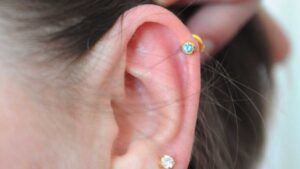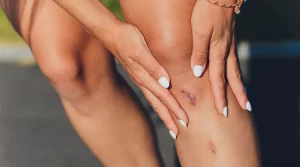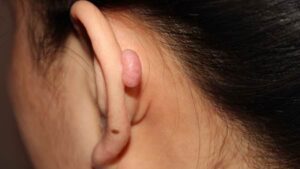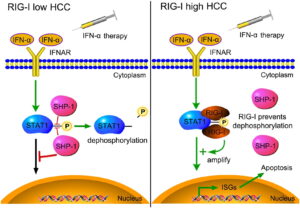Have you ever gotten a piercing and noticed a bump or raised scar tissue forming around the site? While some may dismiss it as a normal part of the healing process, distinguishing between a piercing bump and a keloid is essential. When it comes to getting a piercing, it’s necessary to know the difference between a piercing bump vs keloid.
Piercing bumps and keloids are raised scars that can form around a piercing but differ in their causes and treatments. Piercing spots are typically caused by irritation or trauma to the piercing site and can often be treated with proper aftercare and patience. On the other hand, keloids are an overgrowth of scar tissue that can form beyond the boundaries of the piercing site and be more challenging to treat.
Knowing the difference between a piercing bump vs keloid can help you identify and seek appropriate treatment for any issues that may arise with your piercings. In this article, we’ll explore the causes, symptoms, and cures for both sharp bumps and keloids, as well as provide tips for preventing their formation in the first place.
What is a Piercing Bump?

A piercing bump is a small raised bump that can form around a piercing. It is a common complication of piercings and can develop on any part of the body that has been pierced. The bump usually appears a few weeks or months after the piercing and can be caused by a variety of factors, including:
Irritation:
Piercing bumps can be caused by irritation from the piercing itself. This can occur when the piercing is moved or pulled or when it comes into contact with clothing or other objects. Over-cleaning the piercing can also lead to irritation and bump development.
Infection:
An infection can cause a piercing bump to form. If bacteria or other pathogens enter the cutting site, the body’s immune response can cause the formation of a spot. Symptoms of an infected piercing include redness, swelling, pain, and discharge. In some cases, a fever may also develop.
Allergic reaction:
Some people may be allergic to the metal used in their piercings. This can cause an allergic reaction and the development of a bump. Common metals that can cause allergic reactions include nickel, commonly found in cheap jewellery. Symptoms of an allergic reaction can include itching, redness, and swelling.
Trauma:
A piercing bump can also be caused by trauma to the cutting site. This can occur if the piercing is accidentally hit or pulled or the jewellery is caught on something. Trauma can also occur during sports or other physical activities.
Improper aftercare:
Proper aftercare is essential to prevent the formation of a piercing bump. An infection can develop if the piercing is not cleaned regularly or exposed to dirty environments. Improper jewellery placement or sizing can also lead to irritation and bump development. Additionally, using harsh or irritating products on the piercing can cause the skin to become inflamed and form a bubble.
What is a Keloid?

A keloid is a raised scar that can form around a piercing. Keloids are more common in people with darker skin tones and are caused by an overgrowth of scar tissue. Keloids can be large and disfiguring and can itch or be painful.
Unlike piercing bumps, keloids are not caused by infection or irritation but are instead caused by an overactive healing response. Keloids can develop months or even years after a piercing and are more challenging to treat than piercing bumps.
Differences between Piercing Bump vs Keloid
One way to tell the difference between a piercing bump vs keloid is by the size and appearance of the bump. While both piercing bumps and keloids are raised bumps that can form around a piercing, the two have several differences. These include:
Cause:
A piercing bump is typically caused by irritation or trauma to the cutting site, resulting from poor aftercare practices or low-quality jewellery. On the other hand, a keloid is an overgrowth of scar tissue that can occur due to an injury or surgery and can also be caused by genetic factors. If you notice a piercing bump vs keloid forming around your piercing, avoiding touching or picking at the area is essential, as this can worsen the condition.
Appearance:
A piercing bump usually appears as a small, red or white bump near the cutting site and may be accompanied by discharge or crustiness. The spot may be tender or itchy, but it is typically not painful. On the other hand, a keloid is a raised, thickened scar that can extend beyond the boundaries of the original wound. It is typically shiny, smooth, pink or purple and can be accompanied by itching or pain.
Location:
Piercing bumps typically form directly around the piercing site. In contrast, keloids can develop anywhere on the body, although they tend to occur more commonly on the chest, back, shoulders, and ears.
Treatment:
Treatment for a piercing bump vs keloid can vary depending on the severity of the spot or keloid, but it’s essential to seek advice from a professional. Treating a harsh abscess involves addressing the underlying cause of the irritation or trauma to the piercing site.
This may involve cleaning the area with a saline solution, avoiding tight or restrictive clothing or jewellery, and using high-quality, hypoallergenic jewellery. In some cases, the bump may resolve independently with proper care. Still, in other cases, a healthcare provider may need to remove the piercing or prescribe topical or oral antibiotics to help it heal.
Treating a keloid is typically more challenging and may involve a combination of approaches. This may include topical treatments such as corticosteroid creams or silicone gel sheets, injections of corticosteroids directly into the keloid, cryotherapy, laser therapy, or surgery to remove the keloid.
Combining these treatments may sometimes be needed to treat a keloid effectively. It’s important to note that keloids can be challenging and may sometimes not respond to treatment.
Treating a Piercing Bump

Piercing bumps can be a common and uncomfortable problem for those who have recently gotten a piercing or have been wearing jewellery in the piercing for an extended period. Various factors, including infection, trauma, and allergic reactions, can cause piercing bumps. However, most piercing bumps can be treated with proper care and attention.
Here are some steps you can take to treat a piercing bump:
Avoid touching or moving the piercing:
One of the most crucial things you can do to treat a piercing bump is to avoid touching or moving the piercing. Touching or moving the piercing can introduce bacteria and irritants that can worsen the node.
Clean the piercing twice a day with a saline solution or a mild soap:
Cleaning your piercing with a saline solution or a mild soap can help keep the area clean and free from bacteria. Saline solution can be purchased at a drugstore or made at home using non-iodized sea salt and warm water. Mix 1/4 teaspoon of non-iodized sea salt with 8 ounces of warm water to make a saline solution. Gently clean the piercing with the solution using a cotton swab or a sterile gauze pad.
Apply a warm compress to the bump to reduce swelling:
Applying a warm compress to the piercing bump can help reduce swelling and promote healing. To make a warm compress, soak a clean cloth or a cotton ball in warm water and apply it to the bump for 5-10 minutes. Repeat this process 2-3 times a day.
Use over-the-counter pain medication, such as ibuprofen, to reduce pain:
If the piercing bump is causing pain, you can take over-the-counter pain medication such as ibuprofen to help relieve the discomfort. Follow the instructions on the label and do not exceed the recommended dosage. It’s crucial to take proper care of your piercings to avoid the development of a piercing bump vs keloid.
Avoid wearing tight or restrictive clothing around the piercing:
Tight or restrictive clothing can irritate the piercing and worsen the bump. Choose loose, comfortable clothing that does not rub against the piercing.
If the piercing bump does not improve after a few weeks or you experience severe pain, discharge, or fever, seek advice from a professional piercer or medical professional. They can assess the situation and provide additional treatment options, such as antibiotics or removing the jewellery. Remember, proper care and attention can help prevent piercing bumps and promote healing.
Treating a Keloid
Keloids are raised, thickened scars that extend beyond the boundaries of the original injury or wound. They can be itchy, painful, and unsightly. Although keloids are not harmful, they can be challenging and may recur even after treatment. The following are some treatment options for keloids:
Corticosteroid injections:
Corticosteroid injections are often the first-line treatment for keloids. The injection is given directly into the keloid, and the medication helps to reduce inflammation and flatten the scar. This treatment is usually given every few weeks, and it may take several injections to see results. Corticosteroid injections are safe and effective but may cause side effects, such as skin atrophy, hypopigmentation, and telangiectasia.
Surgery:
Surgical removal of keloids is another treatment option. This procedure involves cutting out the keloid and stitching the wound closed. However, surgery can sometimes worsen the keloid, as it can trigger the production of more scar tissue. Therefore, surgery is usually combined with other treatments, such as corticosteroid injections or radiation therapy.
Laser therapy:
Laser therapy is a non-invasive treatment that uses light energy to break down the excess collagen in the keloid. This treatment is safe and effective, but it may take several sessions to see results. Laser therapy is most effective for smaller keloids and is often combined with other treatments.
Cryotherapy:
Cryotherapy is a treatment that uses liquid nitrogen to freeze the keloid. The freezing destroys the excess tissue, and the body eventually absorbs the dead tissue. Cryotherapy is a simple and relatively painless procedure, but it may cause some skin discolouration and scarring.
Radiation therapy:
Radiation therapy is a treatment that uses high-energy radiation to destroy the cells that produce the excess collagen in the keloid. This treatment is usually reserved for large or recurrent keloids, as it can cause side effects, such as skin redness, itching, and peeling.
Sometimes, a piercing bump vs keloid may be treated with over-the-counter remedies, but a doctor or dermatologist may recommend medical treatment for more severe cases.
Silicone sheets or gels:
Silicone sheets or gels are another treatment option for keloids. These products help to flatten the keloid and reduce its size by applying constant pressure to the scar. Silicone sheets or gels are safe and easy to use, but it may take several months to see results.
Interferon therapy:

Interferon therapy is a treatment that involves injecting a medication called interferon into the keloid. Interferon is a protein that helps the body fight infections and tumours. This treatment is still being studied, but it has shown promise in reducing the size and symptoms of keloids.
Keloids are challenging to treat, and there is no one-size-fits-all approach. The treatment options for keloids include corticosteroid injections, surgery, laser therapy, cryotherapy, radiation therapy, silicone sheets or gels, and interferon therapy. Your doctor can help you determine the best treatment based on your keloid’s size, location, and severity.
Conclusion!
In conclusion, piercing bump vs keloid, You’ve probably heard the stories about keloids being caused by using certain types of sutures (like 4-0) or the skin’s reaction to an incision. While that’s true, it’s just part of the story. There are other factors to consider, too.
This can include skin colour, genetics, and certain health conditions. There are many ways to avoid keloids, such as leaving the incision site open for a week to let it heal naturally or using a dissolvable skin adhesive strip instead of sutures.
FAQs!
Can piercing bumps turn into keloids?
Yes, sharp bumps can turn into keloids, although it is uncommon. Keloids are a type of raised scar that can form at the site of an injury or incision, including a piercing. Some people may be more prone to developing keloids due to genetics or other factors.
How long does a piercing bump last?
The length of time that a piercing bump lasts can vary depending on the cause and severity of the spot. Sometimes, a node may go away on its own after a few days or weeks, while in other cases, it may persist for several months or longer.
Do keloids on piercings go away?
Keloids on piercings can be difficult to treat and may not completely disappear. However, several treatment options may help to reduce their size and appearance, such as steroid injections, silicone sheets, and cryotherapy.
Are keloid bumps soft or hard?
Keloid bumps are typically complex, raised, and maybe pink, red, or dark brown. They may also be itchy or tender to the touch. Not all raised scars on piercings are keloids, and other types of scarring, such as hypertrophic scars, may be more common.
